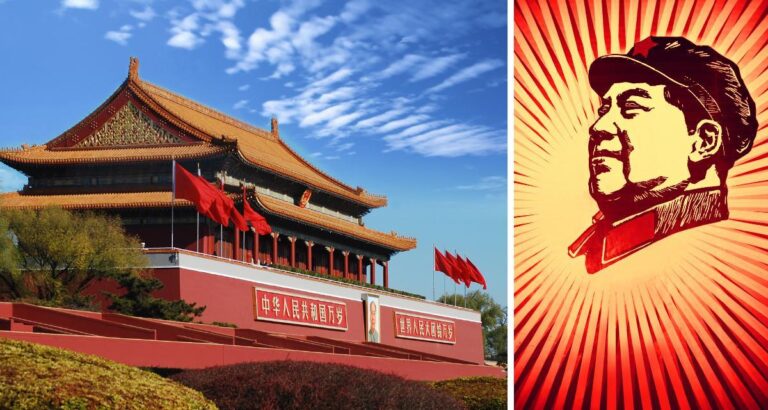China’s ultra-cheap electric vehicles, once hailed as a breakthrough for affordable clean transportation, are now provoking unease within the country’s own automotive and regulatory sectors. As these budget EVs flood the market with prices far below industry standards, concerns are mounting over safety, quality, and the long-term sustainability of China’s rapidly expanding electric car industry. This unexpected backlash highlights the complex challenges facing the world’s largest EV market as it races toward a low-carbon future.
China’s Ultra-Cheap EVs Disrupt Traditional Automotive Markets
China’s latest wave of ultra-cheap electric vehicles (EVs) has begun reshaping the country’s automotive landscape with unexpected speed. Priced at less than half the cost of conventional models, these ultra-budget EVs challenge the dominance of traditional manufacturers by appealing to a vast new demographic previously unable to afford electric mobility. Designed with minimalist features and targeted mainly at urban commuters, these vehicles prioritize affordability over luxury, proving that cost-efficiency can fuel mass adoption faster than anticipated.
Key factors driving this disruption include:
- Government subsidies tailored to low-cost EV producers
- Improved battery technologies reducing production expenses
- Localized manufacturing cutting supply chain overhead
- Rising environmental concerns boosting demand for cleaner options
| Aspect | Traditional Cars | Ultra-Cheap EVs |
|---|---|---|
| Average Price | ¥150,000 | ¥60,000 |
| Range (km) | 400 | 200 |
| Charging Time | 45 mins (fast charge) | 60 mins |
| Market Share (2023) | 65% | 20% |
Regulatory Concerns Rise Amid Rapid Price Undercutting
Government bodies are increasingly scrutinizing the ultra-low pricing strategies adopted by domestic electric vehicle manufacturers, fearing that such aggressive undercutting could destabilize the market and undermine quality standards. Regulators worry that these cutthroat prices may encourage a race to the bottom, forcing rivals either out of business or into compromising on safety and innovation. Discussions are underway to introduce stricter pricing guidelines and enforce better compliance with technical norms to curb potential risks stemming from rapid cost slashing.
Industry insiders highlight several regulatory challenges emerging from this trend:
- Ensuring product safety without stifling competition.
- Addressing potential monopolistic behavior as smaller players exit.
- Maintaining sustainable growth in the EV sector amid fluctuating prices.
| Regulatory Focus | Potential Impact |
|---|---|
| Price Floors | Prevent unsustainable discounting |
| Quality Checks | Ensure consumer safety |
| Market Monitoring | Detect anti-competitive practices |
Policy Recommendations to Balance Innovation and Market Stability
To navigate the disruptive surge of ultra-cheap electric vehicles in China, policymakers must craft measures that protect established manufacturers without stifling innovation. Encouraging sustainable competition requires a nuanced approach, including strengthening intellectual property rights to incentivize original technological development while preventing predatory pricing practices that undercut market viability. Additionally, implementing tiered subsidies can help balance support between emerging startups and legacy automakers, ensuring that subsidies foster healthy innovation instead of reckless price wars.
- Enforce fair pricing standards to curb dumping and maintain industrial health
- Promote joint ventures between new entrants and established firms to foster technology sharing
- Streamline regulatory approvals for genuine innovations with verified environmental benefits
- Invest in infrastructure upgrades that support EV adoption while balancing grid stability
| Policy Area | Proposal | Expected Outcome |
|---|---|---|
| Subsidy Management | Tiered support based on innovation and market impact | Encourages quality innovation, limits price undercutting |
| Market Regulation | Stricter anti-dumping enforcement | Prevents destructive price wars |
| Industry Collaboration | Facilitated partnerships for R&D | Accelerates technology advancement |
Balancing the twin objectives of innovation and market stability also hinges on proactive engagement with consumers and investors. Transparent reporting requirements for EV manufacturers, focusing on safety, battery longevity, and environmental impact, can empower buyers to make informed choices while encouraging companies to maintain high standards. Furthermore, establishing contingency funds to address market shocks caused by sudden price deflation can help cushion supply chain fallout and preserve investor confidence amidst rapid sector changes.
To Conclude
As China’s ultra-cheap electric vehicles continue to flood the market, established automakers and regulators alike are grappling with the disruptive force these newcomers represent. While their affordability promises to accelerate the country’s clean energy goals, concerns over quality, safety, and market stability have sparked a cautious re-evaluation. The evolving landscape of China’s EV industry underscores the complex balance between innovation, regulation, and consumer protection in one of the world’s most pivotal automotive markets.




